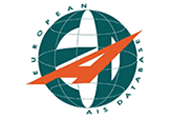
 | |
| [ APAC | AVITECH | EUROCONTROL | FREQUENTIS | ISO | MEKON | NEDGRAPHICS | SOLITEC ] |

The EAD System software and the development environment are based on
the use of various COTS products. The main COTS products used are FrameAPS
and MicroStation/SmartGlobe.
The EAD provides different kinds of services and functionality through various
subsystems. The main subsystems of the EAD are:
- INO,
- SDO,
- AIP,
- PAMS,
- Chart Production,
- Message Handling,
- Support functions with:
- Surveillance, which includes System/Network Management and Helpdesk,
- Security.
INO (International NOTAM Operations):
The International NOTAM Operation (INO) provides facilities for processing,
checking, and creating international NOTAMs and other relevant message data
to be handled by EAD. The INO data is checked against the SDO data and all
other INO data in order to ensure coherence and prevent double publications.
SDO (Static Data Operations):
The Static Data Operation (SDO) provides facilities for the input and checking
of the static aeronautical data required for the safe and timely execution
of flight operations, for the efficient operation of the INO, and for additional
data that is of common interest to EAD Clients.
AIP (Aeronautical Information Publications):
The AIP is responsible for the production, maintenance and storage of the
AIPs, AIP Amendments, AIP Supplements and AICs. The AIP subsystem is based
on the FrameMaker/FrameAPS COTS product.
PAMS (Published AIP Management System):
PAMS is responsible for storing the published documents, viewing services
through read-only access and printing the documents. This includes maps and
charts that are part of any of the above types of documents. The PAMS can
also manage single charts in PDF format. The PAMS subsystem is based on the
flash-DMS COTS product.
Chart Production:
The Chart Production subsystem is used to generate and maintain aeronautical
charts from the SDO database. Charting parameters like chart specifications,
graticule definitions, ellipsoid definitions and symbolisation can be used
and maintained. Chart Production also offers specific charting functionality,
such as geographical calculations and map projections. The Chart Production
subsystem is based on the MicroStation/SmartGlobe COTS product.
Message Handling:
The Message Handling provides EAD with an interface to AFTN/CIDIN and AMHS/X400.
AMHS/X.400 is an option. It is currently not decided whether this option will
be used.
Support functions:
- Surveillance:
Surveillance is based on a COTS product. The product includes functionality that covers the requirements for System Management, Network Management, and Help Desk.
The System Management, Network Management, and Helpdesk subsystem will operate at the two central server sites. In addition, a number of user terminals external to the IT site are configured with software that allows support from the IT site for specific functions such as software delivery. This means that EAD client machines (on client site) can also be configured with a software delivery agent client to automatically deliver software, if necessary. - Security:
The security management is based on COTS products. The security management provides facilities to secure EAD.
An overview of the provided services is given in Figure
2.
Client Concept
EAD provides support for different kinds of Clients. The access rights and
availability of concrete services differs between the clients and also depends
on the competence of the client. For EAD, the following kind of clients have
been considered:
- EAD Technical Staff (terminal-based internal clients):
The EAD Technical Staff, with tasks like Surveillance, Security, and Technical Help Desk is located at the EAD Server Site. - EAD Operational Staff (terminal-based external clients):
The EAD Operational Staff is located at the EAD Offices and supports the operational procedures of EAD. - Data Providers (terminal-based external clients):
The Data Providers are responsible for the provision of AIS data. A Data Provider includes Data User functions. - Data Users (terminal-based external clients):
A Data User has read access to available EAD data. With the possibility to define and store profiles, Data Users can use more functions than Public Users. - Public Users (Internet users):
Public Users are the non-commercial Internet users. The provided functionality is limited to read only. - External Client Systems (with system-based interaction):
An External Client System is seen as an existing national AIS system (or any other suitable system) to be connected to EAD via a system-to-system interface. An External Client System can act as a Data Provider and/or Data User. - AFTN Subscribers (EAD Non-Migrated):
Via AFTN, clients can be connected to EAD as AFTN Subscribers. These clients are either non ECAC Member State Clients or ECAC Member States not yet having migrated.

